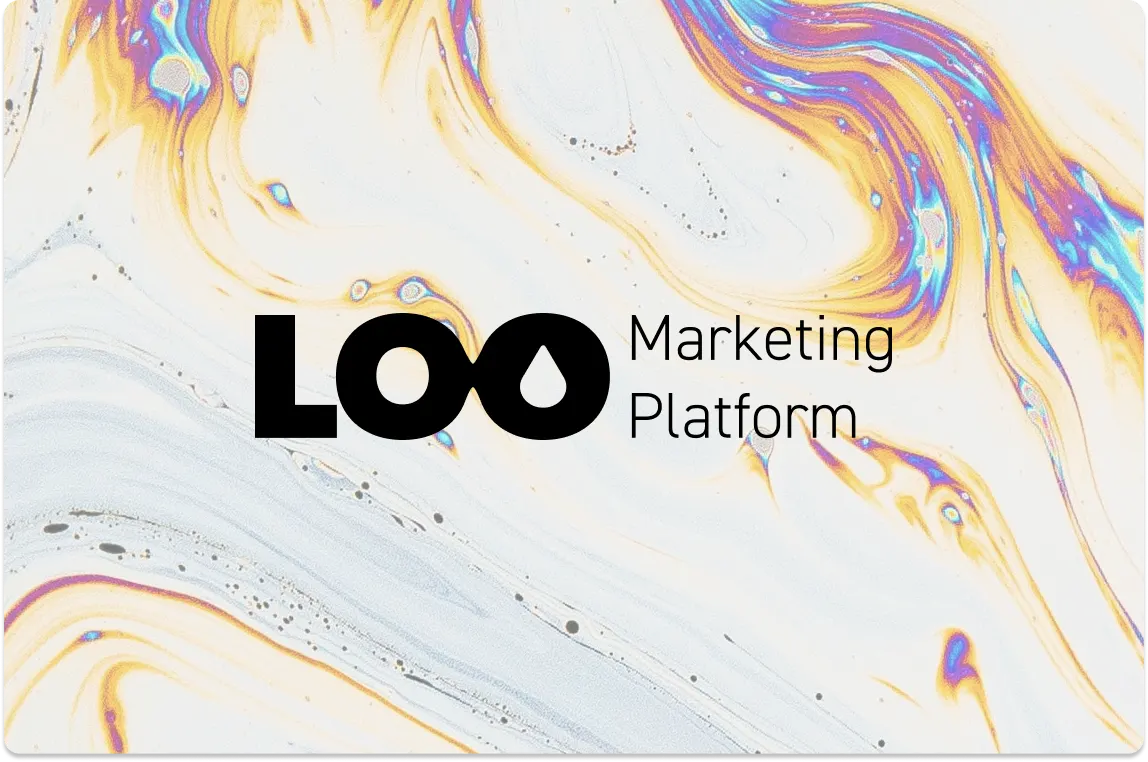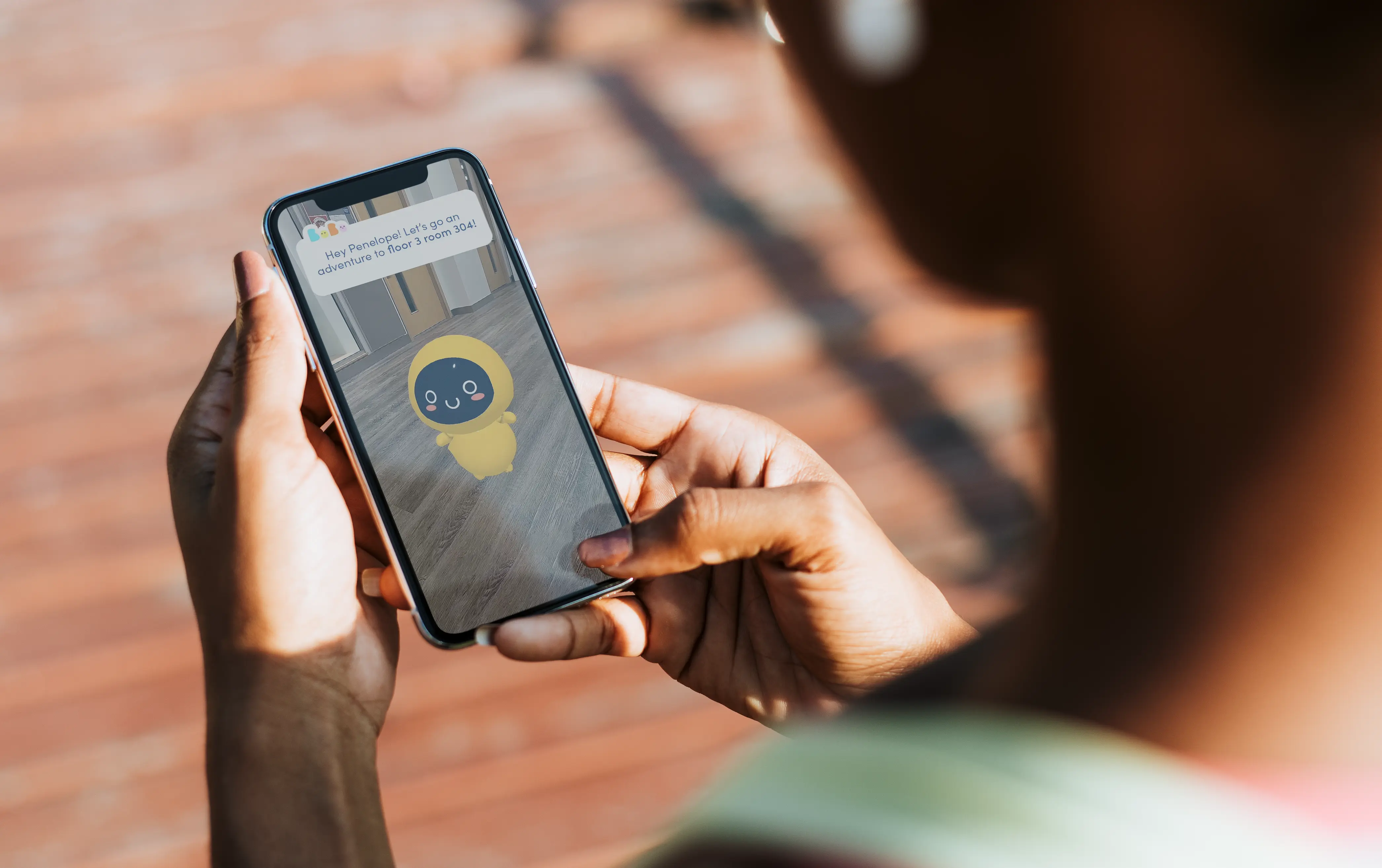A modular service aimed at enhancing social skills and improving speech and communication capabilities in real time
- Main UI/UX and VR developer
- Main UI/UX and VR developer
- Create spatial assets that informs users
- Drive users to have a smooth conversation with others
- Standardize the features of the dash
- Using Unity and integrating it into the Oculus pro
- Building assets for a spatial concept
Results
- Independently worked through the design thinking pipeline to deploy a concept navigating Unity for the first time
- Industry-standard auditory and haptic feedback using official facebook plugin packages
Creating proof of concept: iteration #1
As someone who has experienced and also heard from people about their social anxiety and awkwardness when it comes to meeting new people and hanging out with friends, I wanted to find a way to engage in conversations without asking questions that wont let me get to know the person better faster. I turned these pain points into sketches and also consulted ChatGpt about what speech coaches do.
- Real-time alerts on on speed, clarity and filler/repetitive words in your conversations
- Vocabulary and question prompts that AI could help generate
- Generate a list of mutual interests with AI that both people stated in the conversation
- (ongoing) Training button that could simulate different social environments
- (ongoing) Record and transcribe your conversations to assess later
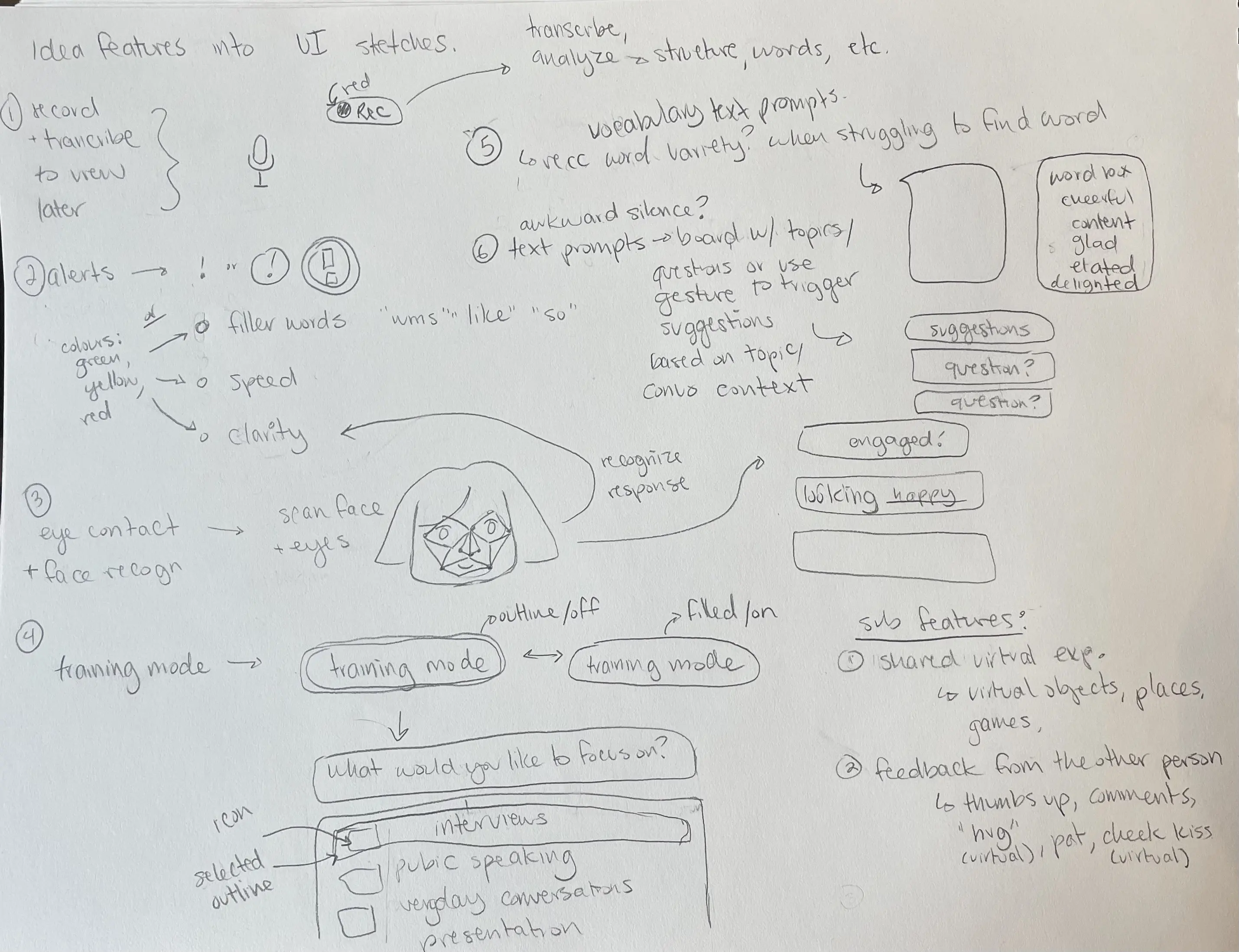
Branding
The logo for Speaksy was designed by combining a quotation mark and a side profile of a smiling face. The aim was to convey the primary function of Speaksy, which is to assess interactions and help people feel less anxious and happier.
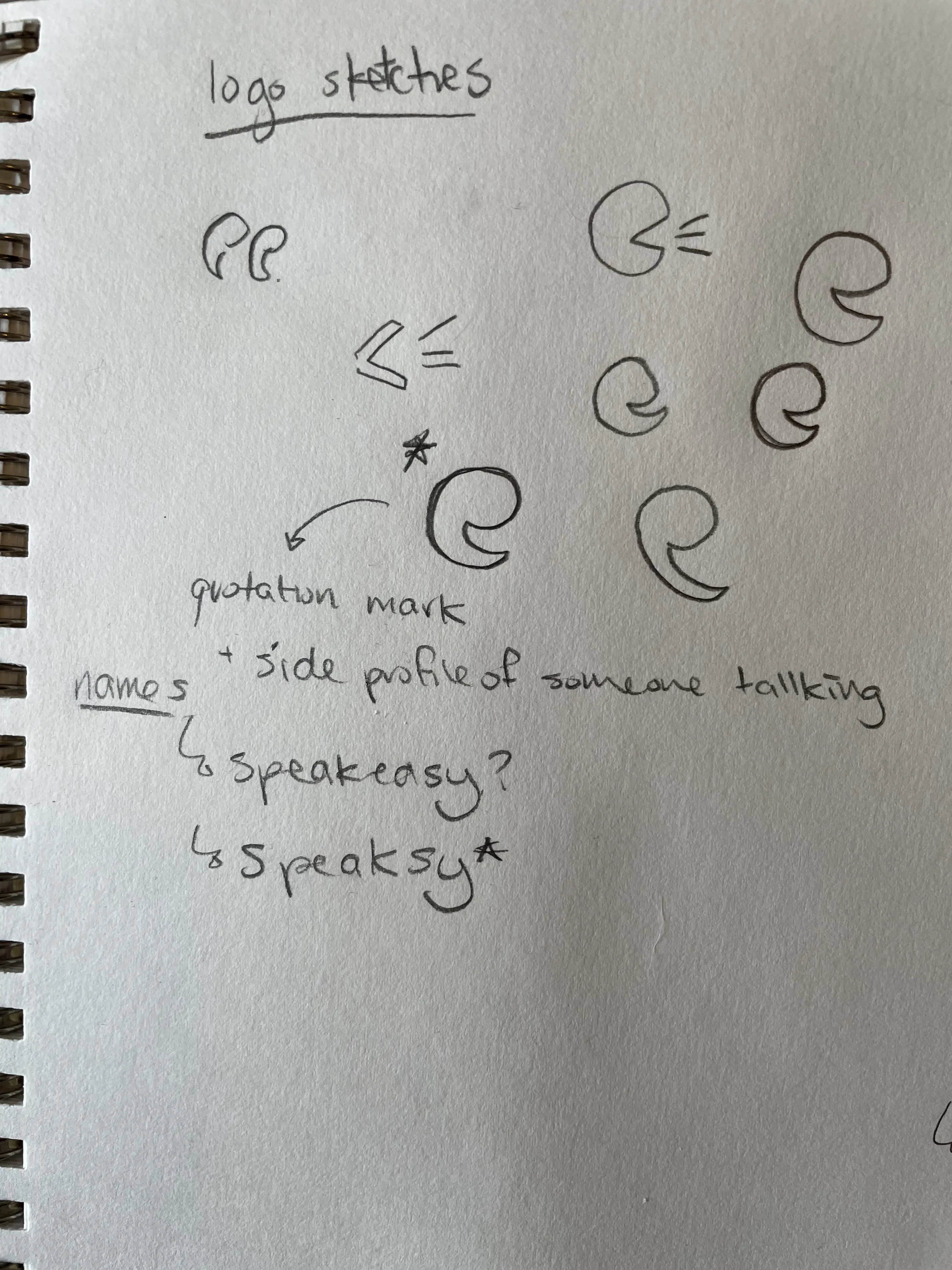
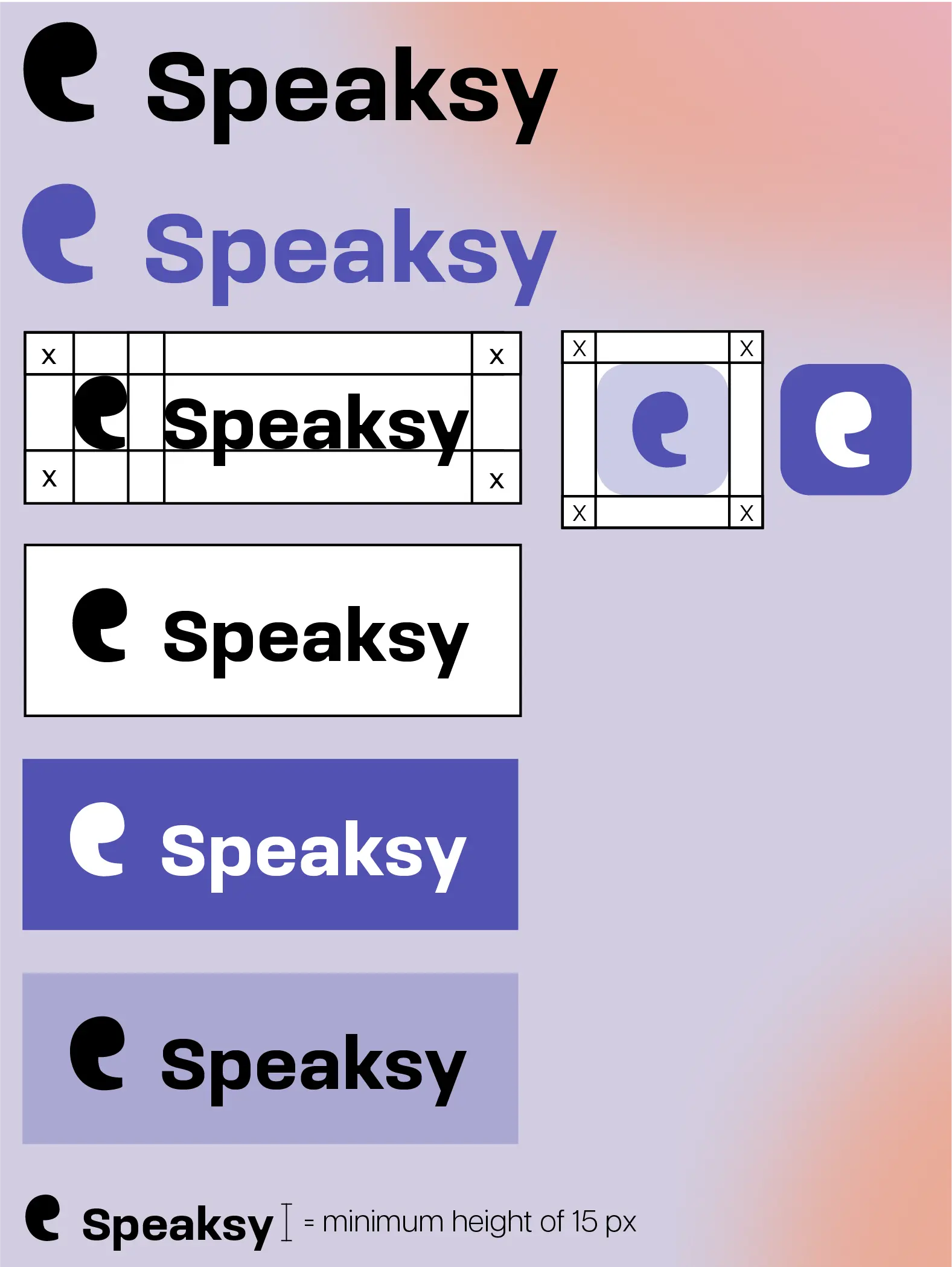
Creating Assets
How can I represent my features in the context of conversations?
I created simple assets that resemble a dashboard displayed on the person you're conversing with, helping to maintain engagement and prevent distractions by avoiding the need to look away from the person's face.

Testing the UI elements in Unity
I imported the assets into Unity to determine their appropriate placement within the spatial context. To achieve this, I used a dummy model that I rigged to simulate the appearance of speaking.
Creating proof of concept: iteration #2
I further refined my idea where I added a side bar menu, that followed the user’s head movements. This will allow the features showcased as a dashboard, on the other person to be modular. This way, certain features on the dashboard can be removed or added back.
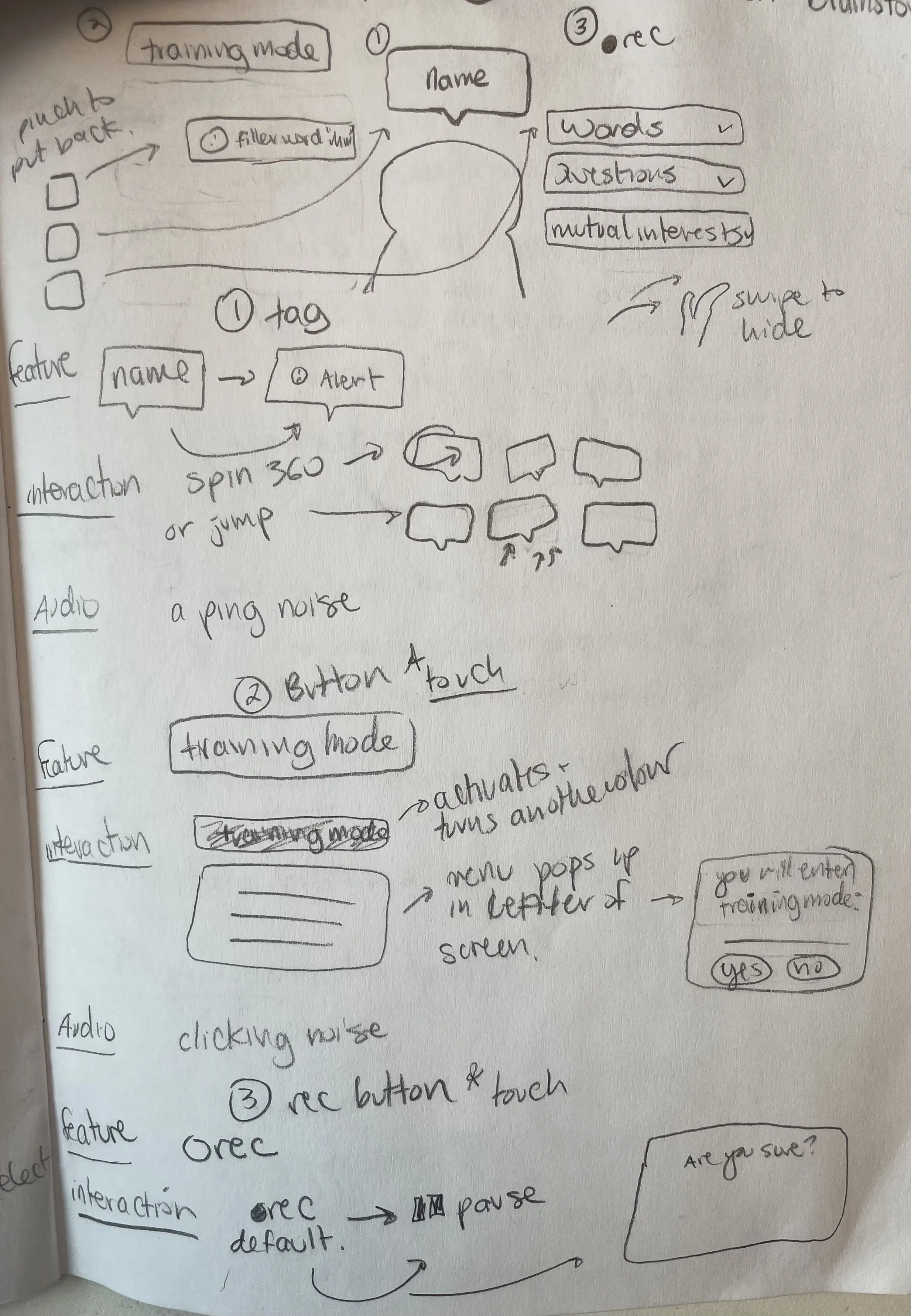
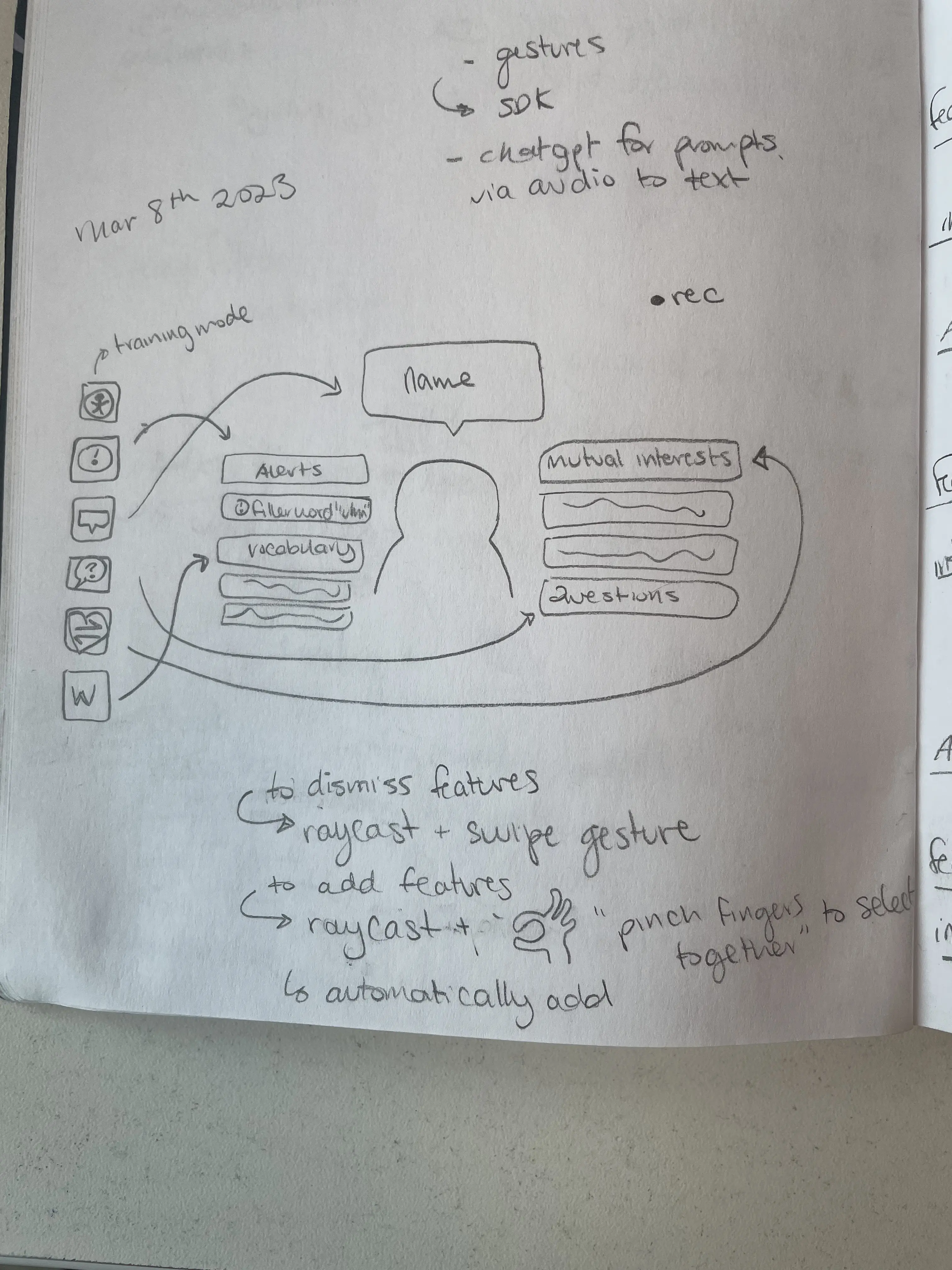
Improving placement of assets to reduce head and eye movements
These UI elements change or respond to user input, providing feedback or displaying new information. As an ongoing project, this dynamic feature will use ChatGPT to help assess the conversation context and generate.
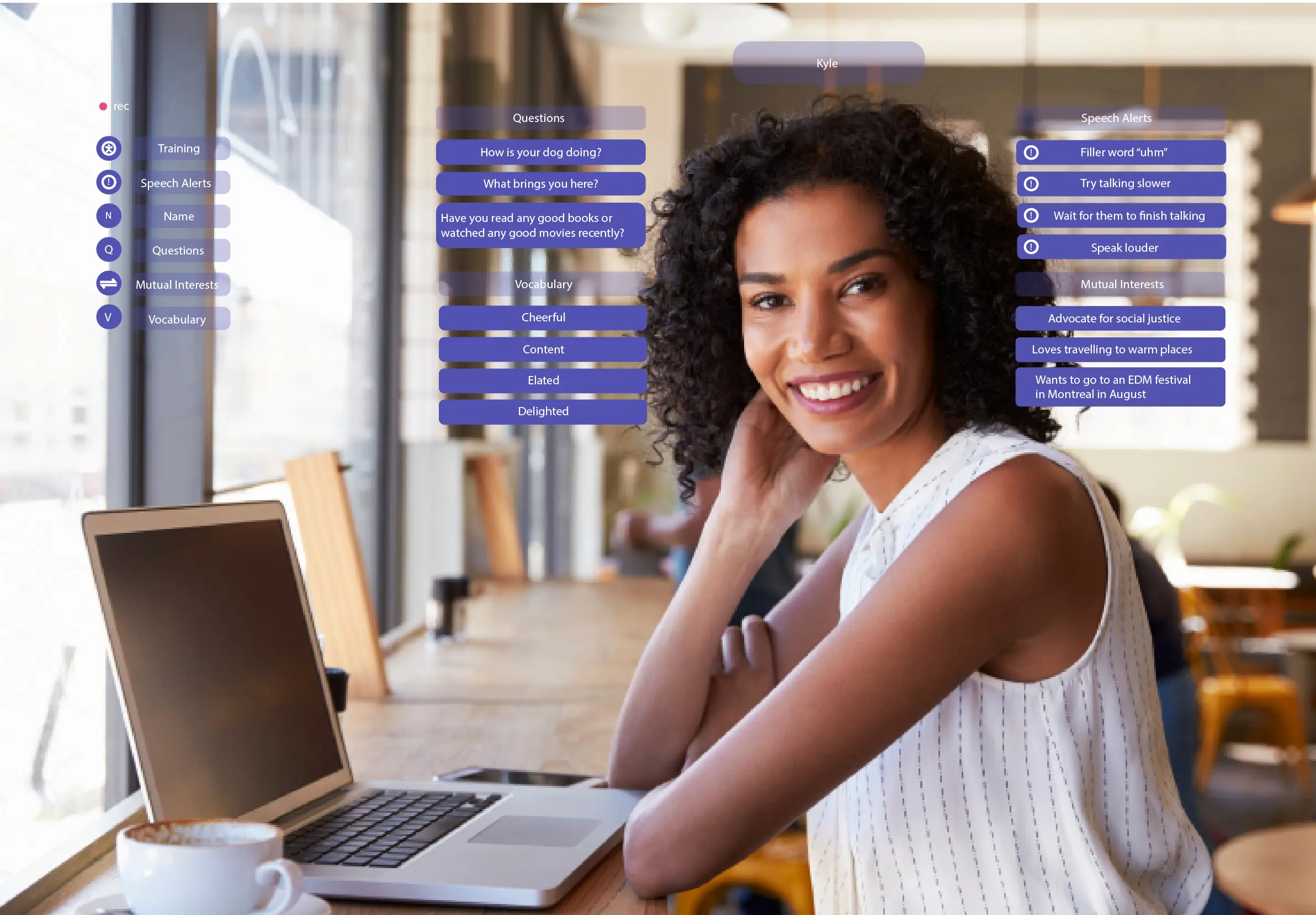
Using unity to help bring the concept to life
Began using Oculus Integration Package RayExample Demo to get raycast to work so that you can select the UI elements. Broke too many things and attempted too many times to look like my designs.
Scraped everything and went with the default buttons from unity and I created a raycast from using the Oculus integration package components and script.
Went back to Unity Demo package and managed to get it as close to my UI elements like my mockup in my second iteration.
Where I am currently
Currently in the making to have chatGPT package imported into the project to allow for voice to text. The text will then be placed within UI elements.
Reflecting on the project outcome and areas of improvement
Despite having no prior experience with Unity, my goal was to create simple assets that would have a significant impact on the user experience. Currently, in my third iteration, I am experimenting with ways to remove and add UI elements and integrating ChatGpt to provide real-time results from conversations. Additionally, I recognize the importance of researching speech and communication skills to better understand how to improve the UX.
Some key takeaways from this project are:
- From zero to something. Through the process of creating assets and experimenting with different features, I have learned a lot about how Unity can be used to enhance user experience. I have explored ways to create immersive environments that engage users and provide them with valuable information.
